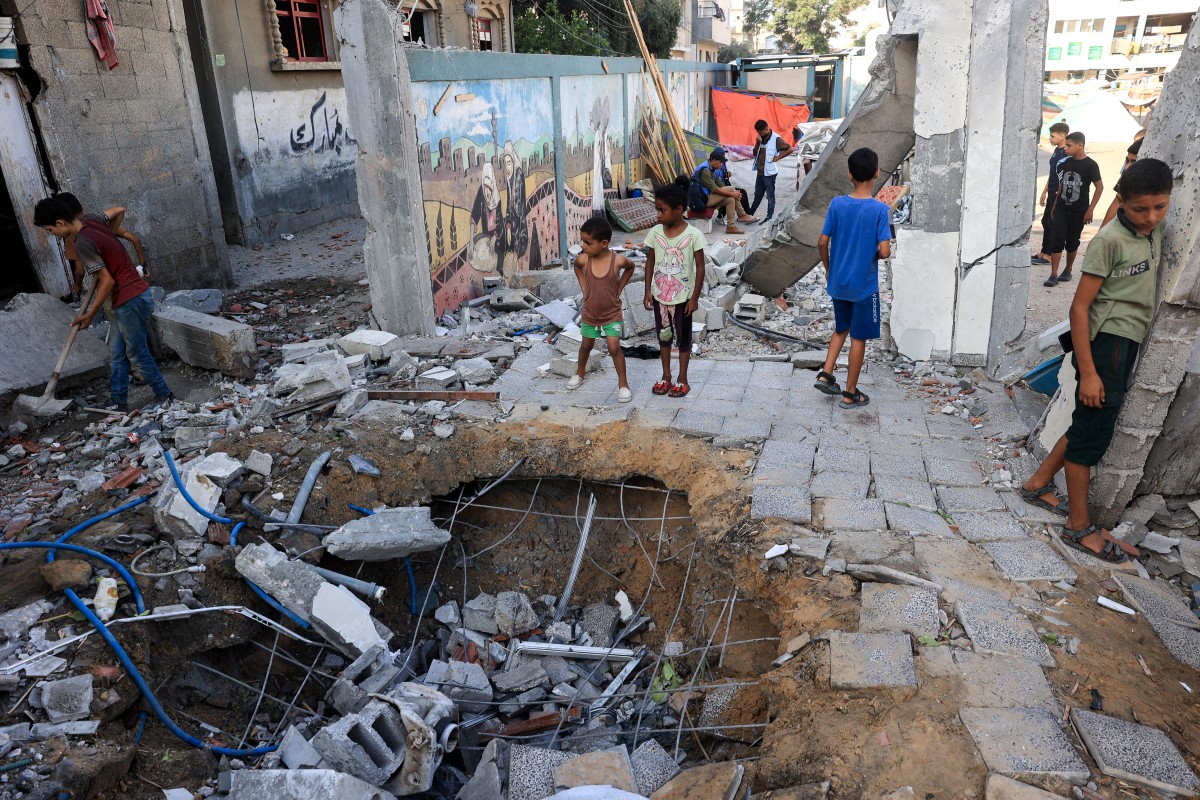Jerusalem, Undefined – Qatari and Egyptian mediators are cajoling Israel and Hamas towards negotiations on a plan to end their war, which has left tens of thousands dead.
US President Joe Biden first outlined in late May what he called an Israeli initiative for a truce and hostage release deal. Mediators are now embroiled in secret contacts with both sides, who have launched diplomatic barbs ahead of this week’s talks.
Here is what is known about the efforts:
Why now?
After failed bids to end the war, the international clamour for a ceasefire has grown.
Since the October 7 Hamas attacks, much of Gaza has been reduced to rubble and its 2.4 million people are surviving on sporadic aid deliveries. The United Nations says children are dying of starvation.
Israel’s Prime Minister Benjamin Netanyahu says nothing will stop the quest to eradicate Hamas and return the hostages. But he is battling domestic opposition as well as international pressure, including from his main ally the United States.
Israel’s military offensive has killed at least 38,243 people in Gaza, also mostly civilians, according to the health ministry in the Hamas-run territory.
The plan
Biden said on May 31 that Israel was proposing a three-phase “roadmap to an enduring ceasefire and the release of all hostages”.
PHASE ONE – The first, six-week phase would include “a full and complete ceasefire; a withdrawal of Israeli forces from all populated areas of Gaza; a release of a number of hostages — including women, the elderly, the wounded — in exchange for the release of hundreds of Palestinian prisoners,” said Biden.
PHASE TWO – If the two sides agree, they will move into negotiating “a permanent end to hostilities,” Biden said. It would include the release of all living hostages and Israeli forces would withdraw from Gaza. Biden said as long as negotiations continue, so will the ceasefire.
Qatari mediators have focused on pushing a permanent end to hostilities while Egypt has been more involved in preparing a hostage swap and getting aid into Gaza, officials said.
PHASE THREE – Biden promised a “major reconstruction plan for Gaza” and the return of dead hostages’ remains in the third phase. The United States has promised involvement but diplomats say the Gulf states will play a key role.
Getting started
Opening even indirect talks will already be an achievement.
“Given the hatred and mistrust between the parties, the biggest challenge will be getting them to take the plunge into talks,” said a diplomat following the mediation. “There is no guarantee.”
After Israel’s Mossad intelligence chief, David Barnea, went to Doha last week, Netanyahu’s office emphasised that “gaps” remain.
But Barnea will return this week and the Shin Bet intelligence chief has been in Cairo with US Central Intelligence Agency director William Burns.
The CIA chief met Egyptian President Abdel Fattah al-Sisi on Tuesday and is expected in Doha on Wednesday.
Netanyahu is maintaining tough demands. “Any deal will allow Israel to resume fighting until all of the objectives of the war have been achieved,” his office said.
The deal has to guarantee “no smuggling of weapons to Hamas from Egypt” and “no return of thousands of armed terrorists to the northern Gaza Strip,” it added.
Hamas, which has sought a withdrawal of Israeli forces but eased demands that Israel commit to a permanent ceasefire, accuses Netanyahu of seeking to torpedo truce efforts.
Hamas political leader Ismail Haniyeh has warned that Israel’s latest offensive against Gaza City and Rafah risked returning “the negotiating process to square one”.
The stakes
Both sides have a lot to lose if the conflict goes on.
Biden warned his ally that “indefinite war in pursuit of an unidentified notion of ‘total victory’ will… only bog down Israel in Gaza, draining the economic, military and human resources, and furthering Israel’s isolation in the world”.
Hamas is fighting for its existence but believes it can survive, according to experts.
Ahmed Fouad Alkhatib, a Middle East specialist at think tank the Atlantic Council, said Israel could not wipe out Hamas.
“No viable immediate alternatives exist to challenge the group’s monopoly, due to both Israeli war-planning failures and the deep entrenchment of Hamas in Palestinian society,” he said.








